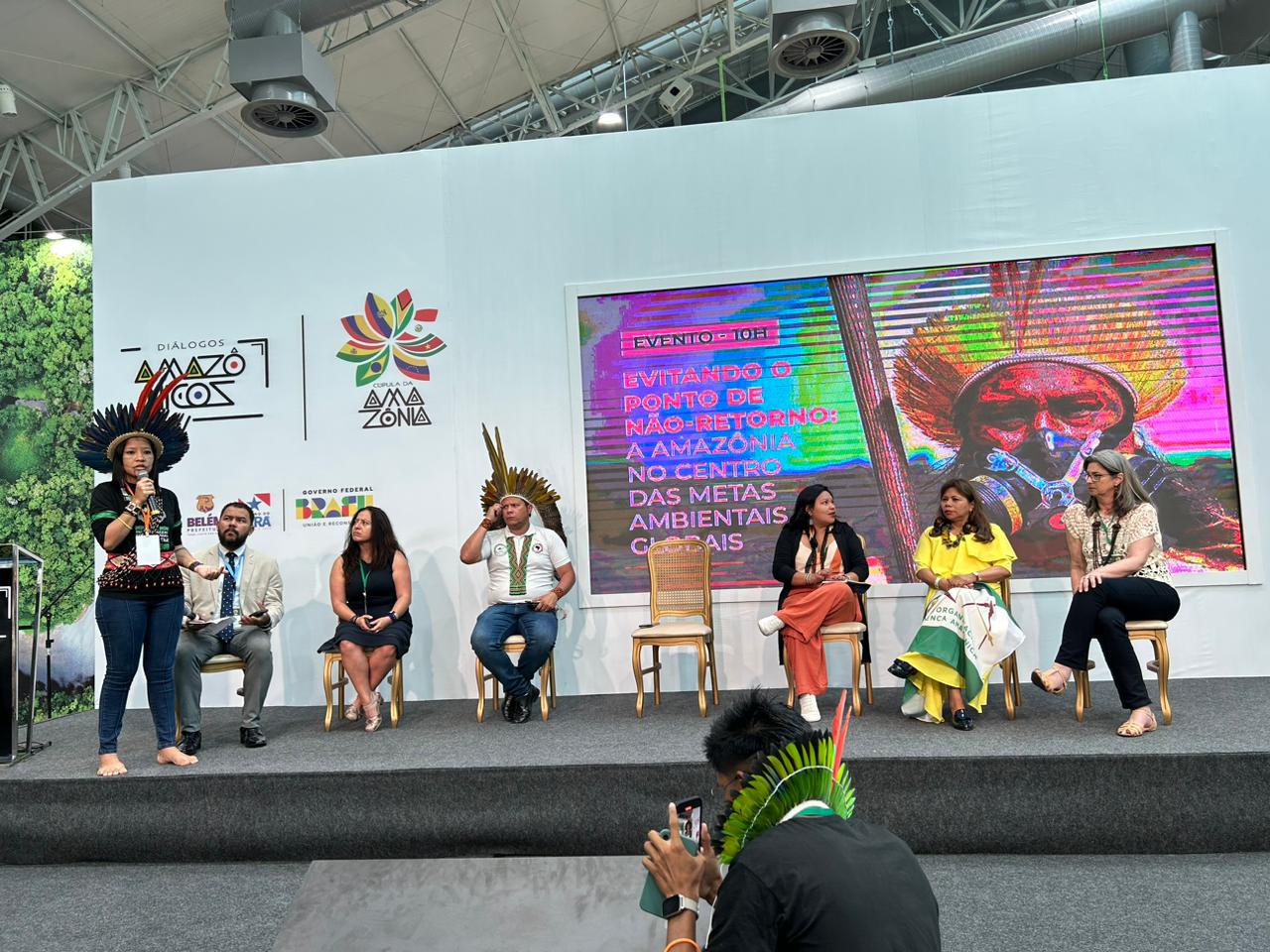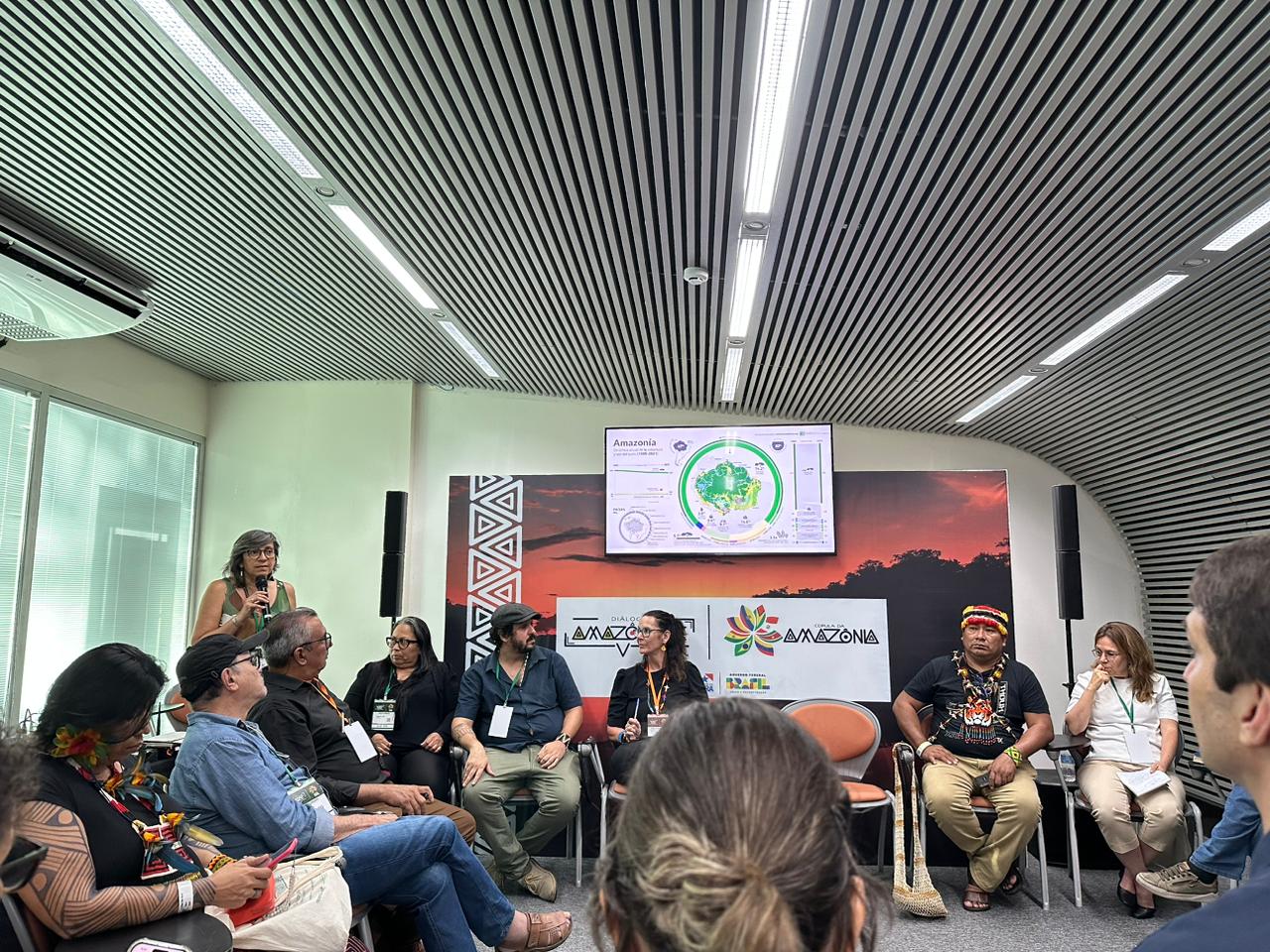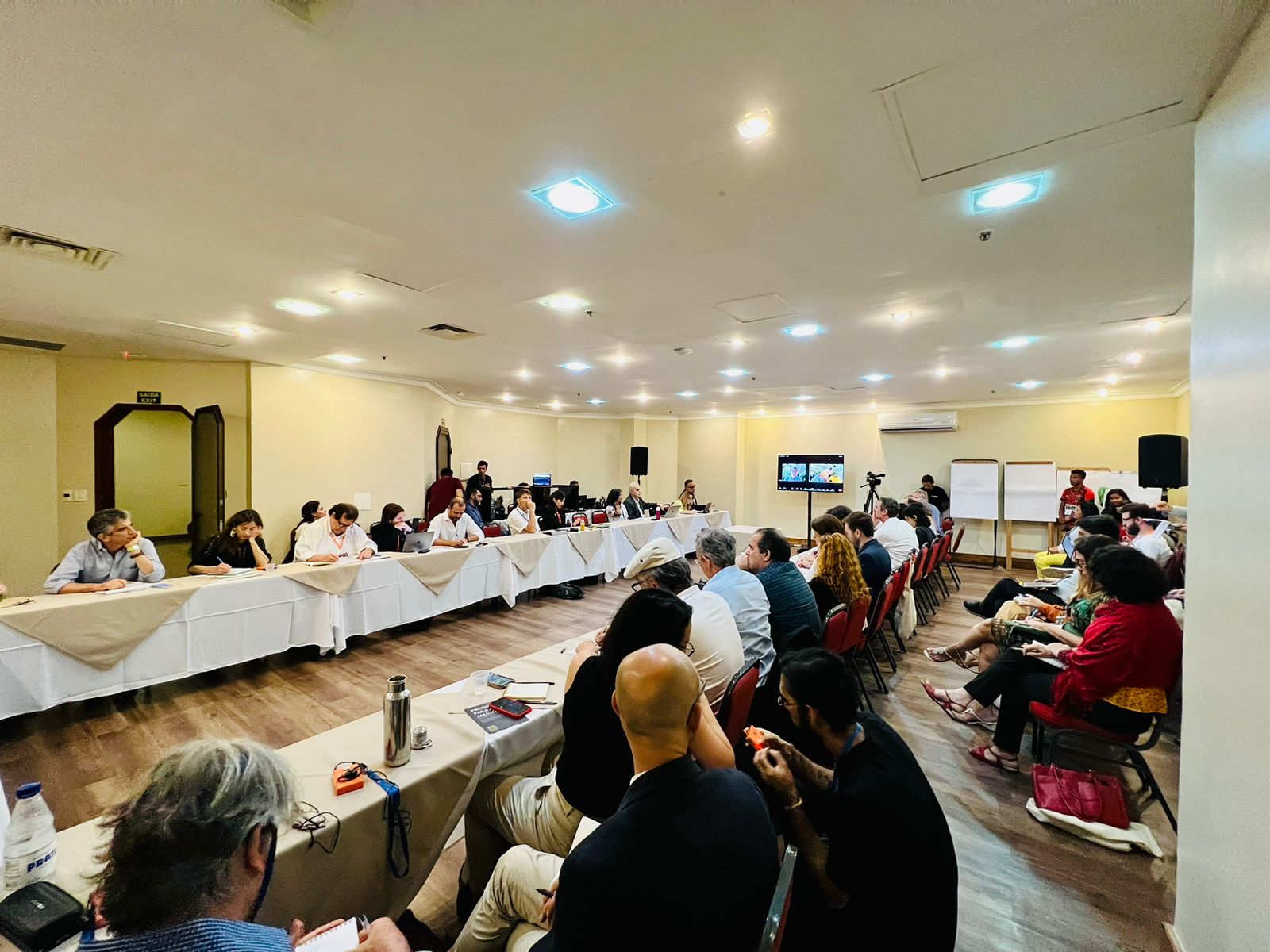On the 5th and 6th of August, preceding the Amazon Presidents’ Summit, the Science Panel for the Amazon co-organized an event with the Ministry of Science, Technology and Innovation called “Biodiversity and Bioeconomy: A Scientific Agenda for the Sustainable Development of Amazon”. This event was geared towards establishing messages and data to submit to the High-Level section of the Amazon Presidents’ Summit from the 8th to the 10th.
On day 1, entitled “Bioeconomies of Standing Forests and Flowing Rivers”, Professor Carlos Nobre presented and launched officially the Policy Brief of Bioeconomy highlighting the Amazonian socio-bioeconomies, which are based on the sustainable use and restoration of standing forests and healthy flowing rivers to support the well-being, knowledge, rights, and territories of Indigenous peoples and local communities.
Panelists like Lauro Barata presented different successful initiatives of the bioeconomy of Amazonian Biodiversity, while Joice Ferreira presented the concepts and characteristics of bioeconomy products and also the work developed in the Bioeconomy PB. Socio-bioeconomies include a combination of activities that maintain productive and conserved multifunctional landscapes and cultural diversity, while promoting economic and social added value to the Amazon’s biodiversity and agrobiodiversity, including: the provision of numerous ecosystem services through the conservation and restoration of forest and aquatic ecosystems and the diversified production and processing of native plants (i.e., fruits, nuts, medicines), fish, and others.

Day 2, entitled “Science and Technology for Sustainable Development in the Amazon: experiences from the CGEE Observatories”, featured a round table of different stakeholders presenting successful examples of the research networks in the Pan-Amazonian Biome. The MCTI presented the OCTI (Observatorio de Ciencia, Tecnología e Innovacao), a network meant to track the indicators of scientific production in Brazil and the world and ensure synergies between various researchers and institutions. Other initiatives presented include the Bioeconomy Observatory from the Center of Management of Strategic Studies in Brasil, SEBRAE presented the Innova Amazonia Initiative to promote innovative businesses and sustainable solutions from the Amazon to the world and their work with Hylaea, the 1st Brazilian enterprise to produce Ibogaina: a substance to treat diseases related to drug or alcohol abuse, created from products coming from the biodiversity of the Amazon.

The session ended with Marielos Peña and Andrea Encalada presenting the Science Panel for the Amazon and Strategic Coordinator Emma Torres reading the letter that functioned as the official submission from the session to the leaders of the Amazonian countries meeting for the Amazon Presidents’ Summit.
The SPA also convened a high-level workshop with the Global Canopy and the Climate Champions alongside the Amazon Presidents’ Summit for finance sector leaders from across the Amazon region on August 6th.

The workshop, “Finance for a Zero Deforestation Amazon”, was convened with a shared understanding that finance is at the heart of any solution to sustainable development challenges in the region. Financing will be required in the transition to more sustainable agriculture in the region, the restoration of degraded land to bring into productive use, and forest conservation and restoration in line with sustainable development pathways.
The session, moderated by Mr. Roberto Waack (Arapyaú Institute), included keynote remarks from former Brazilian Minister of Economy Joaquim Levy, SPA Co-Chair Carlos Nobre, and Indigenous leader and activist Alessandra Munduruku, with participants from multilateral development banks, private financial institutions, and NGOs.
At the end of the discussion, participants identified five key challenges to be addressed for a zero deforestation Amazon:
- Scale solutions and models tested in blended finance mechanisms.
- Increase implementation capacity by structuring technology and technical assistance services to companies and businesses in the region.
- Expand financial flows and redirect existing financial liquidity mechanisms towards transformative economic activities (i.e., restoration, bioeconomy, sustainable transition, adaptation, and mitigation) through new instruments with appropriate mandates (geography, sectors, returns, etc.).
- Capital providers (banks, asset managers, and companies) drive change via their portfolios using risk assessment and management tools and exerting pressure on investors regarding their exposure to deforestation.
- Improve regulatory frameworks to effectively account for nature (climate and environmental) risk in the finance sector’s decision-making (accountability) and to level the competitive moves within the financial sector with sectoral alignment.
